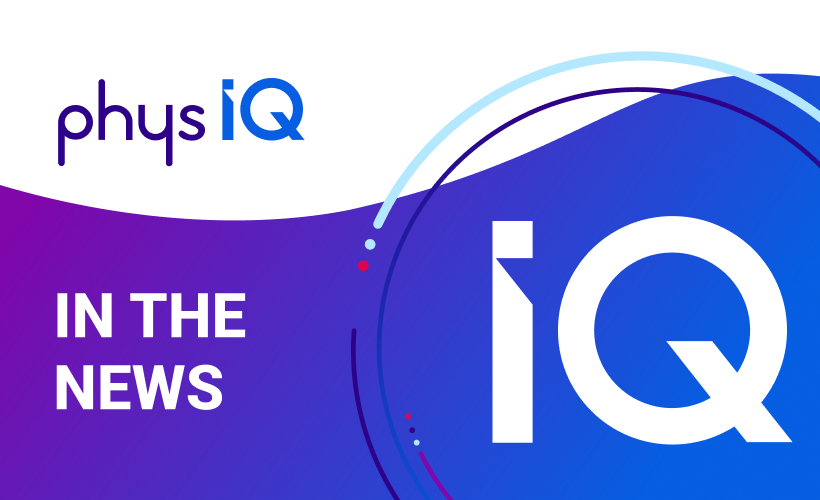Inside an Individual’s Physiological Signature
Originally published in Medical Device & Technology

Originally published in PharmaVOICE
The futuristic concept of remote monitoring of patients using the Internet of Things is already here and being used to improve health outcomes.
Digitization has become a reality in healthcare, and it’s helping to drive more patient choice, including the ability to manage patient health from the home. Wearable devices and telemedicine allow for remote patient monitoring. But perhaps key to helping care for patients at home is the Internet of Things (IoT) — digital tools that enable patients and providers to stay connected by exchanging data in a variety of ways.
The International Telecommunication Union (ITU) has defined IoT as a “global infrastructure for the information society, enabling advanced services by interconnecting (physical and virtual) things based on existing and evolving interoperable information and communication technologies."
In 2015 there were 15 billion connected devices and by 2020, Stanford predicts there will be 50 billion.
“Moore’s Law on size, cost, and performance improvements means that we will soon be enveloped in non-invasive sensors that register our movements and biometric data," says David Ormesher, CEO of closerlook.
“While these tools may have felt futuristic a few years ago, today many of these devices are readily available, affordable, and being covered by payers," says Kathi Henson, chief operating officer, patient services, and chief patient officer, Eversana.
However, success at realizing widespread home healthcare powered by IoT requires a combination of advanced technologies and experienced resources.
“An IoT powered home has smart sensors that can be installed to collect data about the patient, a high speed network infrastructure to take the data from these sensors and other remote diagnostic devices to a central monitoring unit, AI algorithms that are constantly looking at the data to detect changes in patterns that will need medical interventions, and finally healthcare professionals who can quickly intervene to help diagnose and help the patient," says Nagaraja Srivatsan, chief digital officer, R&D Solutions at IQVIA.
According to Daniel Carchedi, senior director, business development and strategy, Microsoft, the intelligent edge — where analysis of data and development of solutions takes place at the site where data is generated — with the power of the intelligent cloud, will transform the way people interact with digital information and further blend the physical and digital worlds for greater societal benefit and innovation.
“The edge, powered by the cloud, enables us to evolve the notion that the ‘world is a computer’ such that we are beginning to interact with computers in a way that doesn’t feel like computing at all," he says.
The Benefits of IoT
The answer to spiraling healthcare costs is proactive disease management at home, says Thomas Dudnyk, president of VIVO Agency.
Ms. Henson says IoT tools not only allow healthcare providers to monitor patients from home in real time, but most crucially allow for early intervention.
“These tools give patients improved access to education about their health condition, including information to help them take earlier action to prevent progression of their conditions, while allowing them to remain independent in the home setting," she says.
Such oversight — in real time and around the clock — creates huge possibilities for patients with chronic disease as well as those trying to stay healthy, says Laura Wilson, patient strategy, Fingerpaint.
IoT also gives clinicians far more insight than they would gather during a visit, or as Dan Chichester, chief experience officer at Ogilvy Health, puts it “three data points at a visit become hundreds of bytes of data every day."
From progressive labs brought to patients’ homes to connected therapies, such as sleep apnea devices, glucometers, insulin pens, weight scales, and non-invasive ventilators, that send information to remote teams alerting them when patients need intervention, IoT can change healthcare, Mr. Dudnyk believes.
“By identifying patients trending toward an exacerbation, we can help avoid costly and uncomfortable ED and hospital admissions," he says. “Wearables, online coaching, and telemedicine services can also drive healthier living and behavior modification. Many of these tools are here right now. In five years, they will form the foundation of outpatient care nationwide."
Mr. Carchedi highlights the technology breakthroughs that have the potential to improve quality of care: push button and speech enablement tools that send out emergency alerts, fitness bands or watches taking vital data from the body throughout the day and transmitting wirelessly in real time.
“These platforms will allow interoperability with a variety of medical devices and apps which are natively available and which generate enormous amounts of data that will help the healthcare industry and let patients live healthier lives," he says.
Deborah Lotterman, chief creative officer at precisioneffect, says IoT will be powering home healthcare, and people will be healthier for it. “From the moment we awake, the sensors that have been monitoring our sleep will offer recommendations for the day ahead," she says.
“Feet will hit a bedside rug that will check skin for signs of a diabetic ulcer. Whether we choose green juice or coffee with 2% milk will be recorded by our smart appliances and the rest of the day’s intake calculated. The fantasy just keeps going, as connected sensors record, calculate, and feed into algorithms that advise. But it’s not a fantasy. The vision is tantalizingly close: those who are healthy will be able to stay that way longer, those who are ill will be monitored and ministered with changes in medication, diet, and motivation."
One huge advantage of IoT in home healthcare, Mr. Ormesher says, is it shortens the feedback loop through immediate biometric alerts to help people to make more rational choices.

Originally published in Medical Device & Technology

Originally published in Pixel Scientia Labs

Originally published in Crain's Chicago